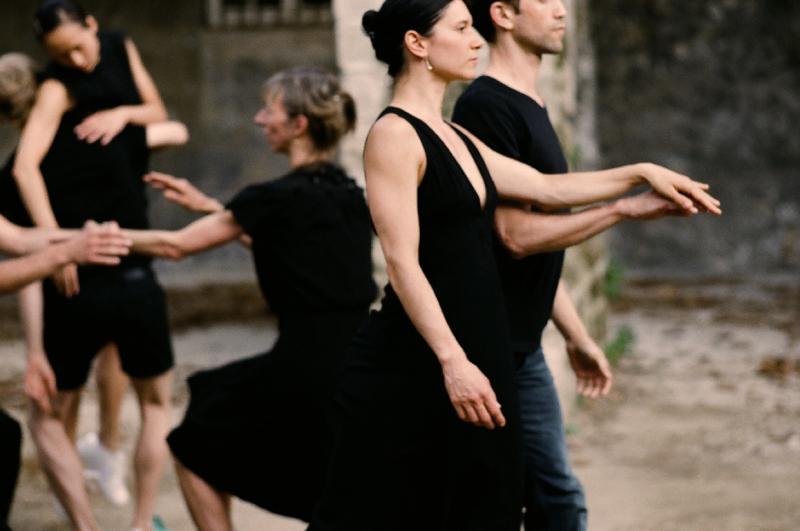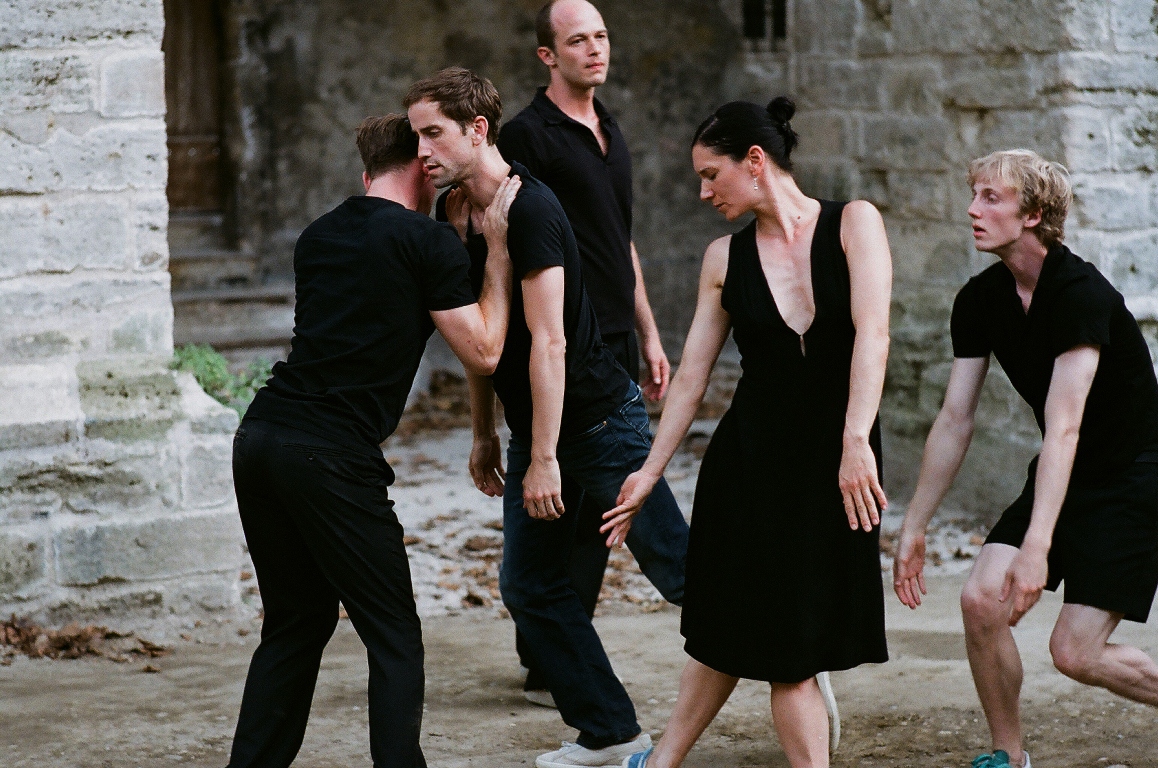


Well, if De Keersmaeker made us work hard for our enlightenment earlier in the week, we more than get our reward with her triumphant, astonishing Cesena in the second part of her double-programme designed for the Avignon Festival.
Both pieces are built around the form of 14th-century polyphony sung in the south, known today as the ars subtilior, the subtle art. While in En Atendant [3] De Keersmaeker focused on the structure of the music, in Cesena she, together with Björn Schmelzer, founder of graindelavoix, a collective for musicians with an interest in physical theatre, concentrates on its dramatic and emotional effect, creating for us a world of ritual and mystery. The melding of her dancers and his singers is complete – it takes a real effort of will to distinguish one from the other, and one soon realizes there is no point: the 19-strong cast are not singers, not dancers, but performers, unified and impelled by movement and music as one.
We start almost literally in the dark (at Avignon [4], performed on the city walls, the piece began before dawn). As En Atendant ended with a naked man circling the stage, so Cesena begins with another, bending and shouting into the dark – the dark is the time for nakedness, for baring the selves that in the day we keep covered, whether with clothes or with rationalization. He is soon replaced by the entire cast pacing outwards to us, back to the dark, into the light, back to the dark, over and over, all to the rhythmic beat of what sounds like a chisel on flint.
 The archaic image conjured by the sound is not an accident. It is hard to say quite how De Keersmaeker achieves her sense of the archaic, for there are no theatrical gestures, no mime for “old”. The set, too, is merely the Sadler’s Well’s stage stripped right back to its bare walls, with no wings and no flats, just the nuanced and delicate lighting (courtesy, I assume, of the scenographer, Ann Veronica Janssens), which superficially entirely derives from three fluorescent strips that hang overhead, but magically does so much more.
The archaic image conjured by the sound is not an accident. It is hard to say quite how De Keersmaeker achieves her sense of the archaic, for there are no theatrical gestures, no mime for “old”. The set, too, is merely the Sadler’s Well’s stage stripped right back to its bare walls, with no wings and no flats, just the nuanced and delicate lighting (courtesy, I assume, of the scenographer, Ann Veronica Janssens), which superficially entirely derives from three fluorescent strips that hang overhead, but magically does so much more.
On the floor is a white circle which, it becomes clear as the performers begin to move, brushing and smearing it, is made out of white sand. As they move across it, they leave behind in physical form the shape of their passing, building pictures of a world at once impenetrable to the modern mind, and yet cohesive, if not quite coherent. There is no sense, despite the work's title (Cesena, in today’s Emilia-Romagna, was the site a massacre in 1377, overseen by the man who later became the Avignon antipope Clement VII), that any story is being told, but the emotional resonances, outlined in the music, and in the movement, are never in doubt.
The greatness of De Keersmaeker’s art reveals itself in the simplicity with which she gains her profoundest effects. The company sing a Kyrie, standing on a diagonal across the stage, before moving forward, loomingly, to stare out at us from the front of the stage. Or two women circle the white sand, gently brushing their toes across the surface, turning inwards, half drifting, as though impelled by a sudden thought, rather than De Keersmaeker’s formidable geometrical brain. These are simple things to describe, but they carry incalculable power.
And all the time the music of the ars subtilior winds around our minds, our hearts, to leave an indelible idea of a world that has gone, a sense of intangibility that De Keersmaeker has, none the less, made tangible. By the end we are not so much watching a performance as taking part in a communal event. Unmissable.
Links
[1] https://theartsdesk.com/users/judithflanders
[2] https://www.addtoany.com/share_save
[3] http://www.theartsdesk.com/dance/en-atendant-anne-teresa-de-keersmaeker%E2%80%99s-rosas-sadler%E2%80%99s-wells
[4] http://www.theartsdesk.com/theatre/theartsdesk-avignon-festival
[5] http://www.amazon.co.uk/s/ref=nb_sb_ss_i_0_7/275-5710833-6125511
[6] http://www.amazon.co.uk/s/ref=nb_sb_ss_i_2_5
[7] http://www.ents24.com/web/event/En-Atendant--Cesena--Sadlers-Wells-Theatre-London-2935819.html
[8] https://theartsdesk.com/node/18382/view
[9] https://theartsdesk.com/node/84/view
[10] https://theartsdesk.com/node/3522/view
[11] https://theartsdesk.com/node/92/view
[12] https://theartsdesk.com/dance
[13] https://theartsdesk.com/topics/performance-art
[14] https://theartsdesk.com/topics/contemporary-dance
[15] https://theartsdesk.com/topics/minimalism
[16] https://theartsdesk.com/topics/physical-theatre
[17] https://theartsdesk.com/topics/dance-theatre
[18] https://theartsdesk.com/topics/reviews
[19] https://theartsdesk.com/topics/sadler's-wells